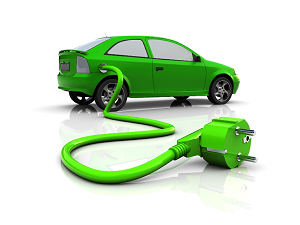
Introduction
Energy conservation, environmental protection and sustainable development are among the growing concerns in the contemporary society. The need to limit the negative impact of fossil fuel consumption on the environment and reduce fossil fuel dependency motivated the development of electric vehicle technology. Electric vehicle technology is considered to be a sustainable solution to the increasing negative influence of transportation modes on the environment through the energy sources utilized (Larminie & Lowry, 2003). According to Chan and Chau (2001) with predicted increase in global population, the amount of vehicles in the society is also estimated to rise from 700 million to 2.5 billion in the next 50 years. The vehicles, which use internal combustion engines, need fossil fuel to generate energy. The main concern is that the existing energy sources cannot sustain tat increase in demand and pollution will also be on the rise. This paper explores the cost efficiency of electric vehicles to the owners in an attempt to determine the sustainability of the technology in replacing conventional fossil fuel consuming vehicles. Utilization of relevant scholarly literature will be applied in the paper to provide necessary information needed to expel the aspects presented.
Electric vehicle
Larminie and Lowry (2003) and Helmers and Marx (2012) explain that electric vehicle is divided into electric battery, the electric motor and motor controller. The batteries, which provide energy for the electric vehicles, are charged with electricity either through charging device, which is provided in the electricity grid or during braking through recuperation. The motor controller in electric cars provides supplies the vehicle with variable power, which is influenced by the load situation the vehicle is engaged in. The electric motor in electric vehicles convert electric energy obtained from electricity into mechanical energy, which are them consumed by the vehicle.

Halderman and Martin (2008) explain that electric vehicles, which are present in the contemporary society, their motors, are based on permanent magnetic materials. Alloys, which contain rare earth elements like neodymium and samarium, are the most preferable choices to be used in developing the motors. The scarcity of the materials raises the costs of production, which make the vehicles expensive to acquire after being manufactured. This has been cited as the reason behind limited ownership of the electric vehicles in the modern society even with significant improvement in speed and positive effect on the environment (Shen, Shan & Gao, 2011).
Wu (2010) states that improved battery technology in electric vehicles, recharging strategies, which are cost efficient and financial incentives on owning electric vehicles, are making the vehicles to be attractive to consumers in the society. A person owning an electric vehicle has the ability to save many resources in terms of costs as they are provided with incentives and innovative recharging technologies cut on the costs they need to spend to recharge the vehicle batteries (Lee & Lovellette, 2011).
According to Delucchi et al. (2014) there are numerous benefits attached to ownership of electric vehicles in the contemporary society. Government regulations, which are motivated by the need for environmental conservation, provide incentives for buying an electric vehicle. Electric vehicles have limited negative impacts on the environment, as they have zero emissions. The greenhouse gases, which are the main pollutants of the environment and are produced as a result of fossil fuel combustion are not emitted in electric car energy combustion. This makes the vehicles environmental friendly hence the incentives to encourage ownership of the vehicles and reduce ownership of conventional vehicles (Long et al., 2013).
|
Grammar
D
|
Formatting
B
|
Organization
B
|
Style
B
|
